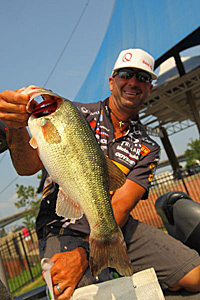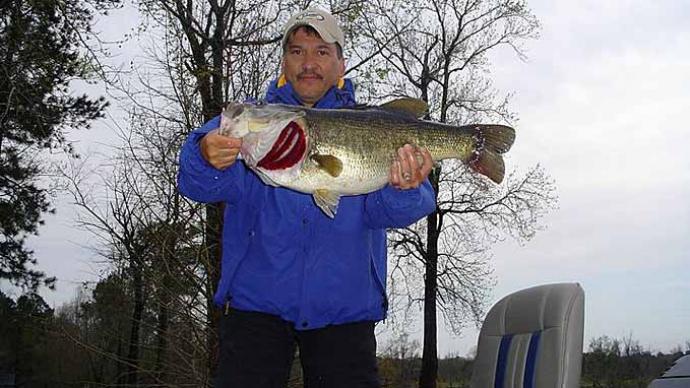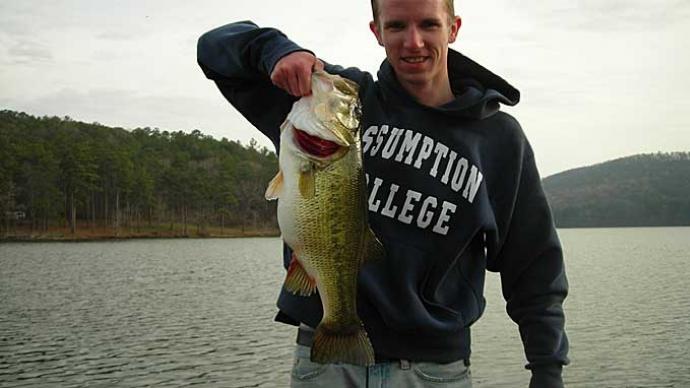
We are heading into the time of year when fish are in transition. Some will be spawning, some may have already spawned and some may just now be beginning to stage for the spawn. It can be feast or famine through spring and into summer for those of us trying to catch bass.
Shallow fish that are working on beds and in the process of spawning can be easy to catch at times, but they can also be finicky and ignore your lure for hours. To at least some extent, their reluctance to strike a bait at this time of year will come from the fact that they've had every lure in the world tossed their way over the past month or so. The fish that live in shallow water get the most fishing pressure because most fishermen fish shallow - especially this time of the year.
In our tracking studies we found a definite layer of fish in shallow water and another in deep water, but the most surprising group of fish were the mid-layer fish. These are the fish that few, if any, fishermen catch or even know to look for.
Fish that live in a suspended mode will live in 10 feet, suspended over deeper water. To them this is a safer place than living along the shoreline. They receive less fishing pressure in this zone. This fish will have a daily routine of traveling to the shallows to feed, then moving back out to the zone they have been suspending in once again to rest.
This particular group of fish are made up of generally larger individuals than those you might catch in shallow or even deeper water. I believe there are likely more trophy fish living in this manner than living in shallow water year round. Fishing deeper water, but at depths of 10 feet or so, can offer you some of the most productive fishing you'll have.
Many fishermen don't like fishing for suspended fish because they, like all other bass, can be difficult to catch at times. However these fish will feed from about 9:00 am until 10:00 or so every morning. They will be actively searching for food and if you are in the right place at the right time, you can catch this fish.
Many larger female bass upon finishing their spawn will retreat to these mid-layer suspending zones. They will hold these positions for as long as 30 to 60 days. Often they will drift out to the depth at which the lake stratifies and then remain at that level until the heat of summer passes.
This is the same time that deeper water residents will drop back even deeper than their normal locations. Though holding in deeper than normal water, these fish will also be feeding actively. This is why fishermen can catch really nice bass in very deep water during the warmer summer months. But it is the mid-layer bass that rarely gets a lot of attention. Fishermen too often pass over an area, graph suspended fish and move on thinking they cannot catch these fish. That is not always the case.
To catch this mid-layer bass you must use baits that work the depth at which the fish are holding. The best ones will be those that suspend, like the fish are suspending, or those that you have altered to suspend. Fishing these baits in a manner that puts them in the area where the bass are, then holding it there for as long as possible, will put fish in the boat for you.
There are a number of suspending crankbaits available, but there are also products you can add to your crankbaits and other lures to help them suspend. These are very light weights that stick onto the lure, or you can create the same basic function by simply adding a little weight with small pinch-weight to your line just above the lure.
Just remember that bass live by established patterns. Each day they travel areas they traveled the day before. They feed in the same places that they have come to know there will be prey swimming. Day in and day out, these fish will do what has worked. The only exceptions will be changes in habit due to extreme weather changes and such. These fish will simply become semi-active, not totally inactive as long as there hasn't been a massive front with high pressure. Should there be high pressure and a strong front, you aren't likely to find these fish moving or actively feeding until it passes.
Don't be afraid to fish for suspended bass. Try a variety of lures, retrieve actions, and depths until you get a hit. In general you must put the bait in front of the fish and that bait must do something that entices that fish, but that is much the case a great deal of the time with larger fish not even suspended. It is only the smaller, younger, and usually hungrier bass that will chase lures from long distances away.




